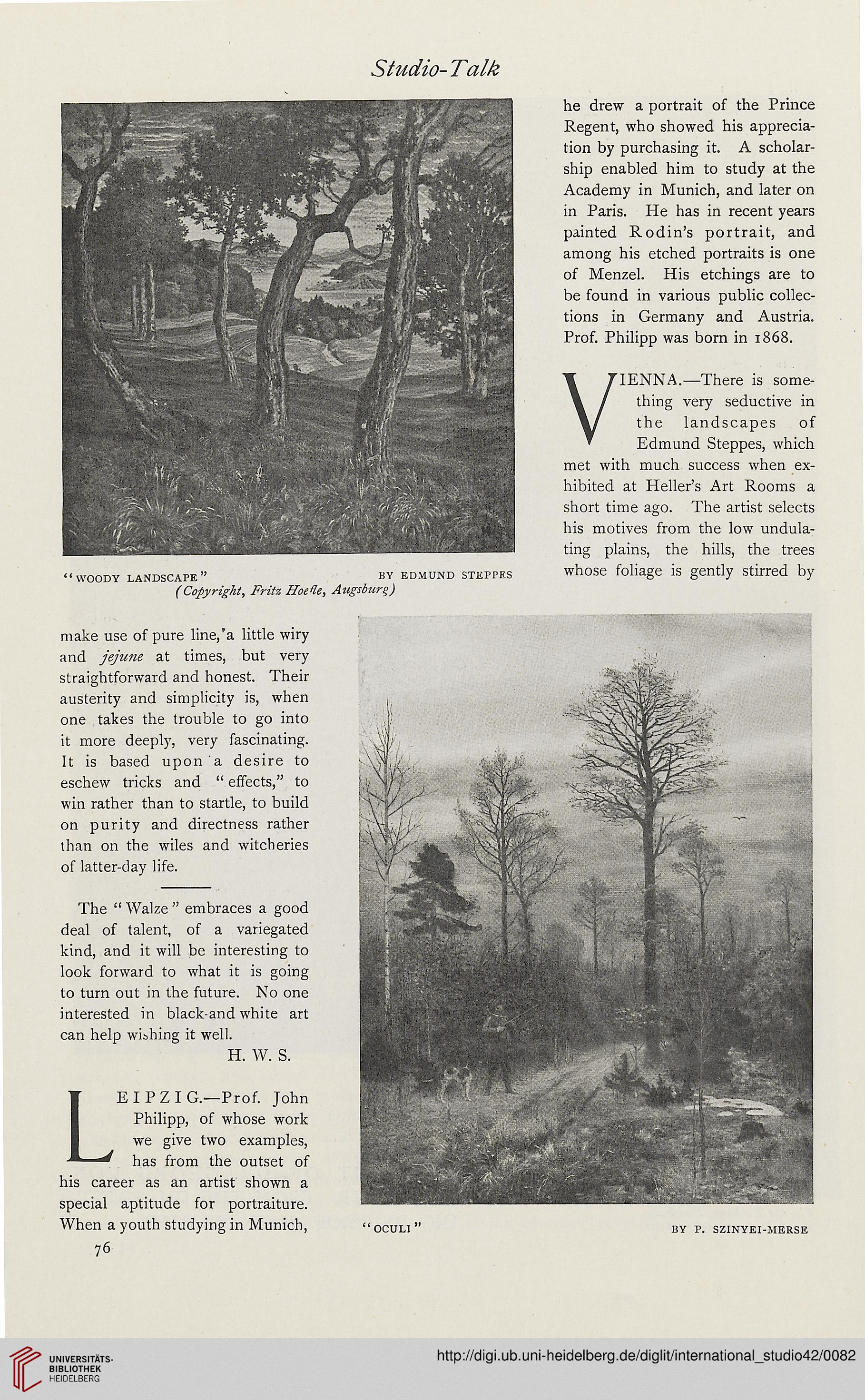Studio-Talk
he drew a portrait of the Prince
Regent, who showed his apprecia-
tion by purchasing it. A scholar-
ship enabled him to study at the
Academy in Munich, and later on
in Paris. He has in recent years
painted Rodin's portrait, and
among his etched portraits is one
of Menzel. His etchings are to
be found in various public collec-
tions in Germany and Austria.
Prof. Philipp was born in 1868.
V
1ENNA.—There is some-
thing very seductive in
the landscapes of
Edmund Steppes, which
met with much success when ex-
hibited at Heller's Art Rooms a
short time ago. The artist selects
his motives from the low undula-
ting plains, the hills, the trees
"woody landscape" by edmund steppes whose foliage is gently stirred by
(Copyright, Fritz HoeVe, Augsburg)
make use of pure line,'a little wiry
and jejune at times, but very
straightforward and honest. Their
austerity and simplicity is, when
one takes the trouble to go into
it more deeply, very fascinating.
It is based upon a desire to
eschew tricks and " effects," to
win rather than to startle, to build
on purity and directness rather
than on the wiles and witcheries
of latter-day life.
The " Walze " embraces a good
deal of talent, of a variegated
kind, and it will be interesting to
look forward to what it is going
to turn out in the future. No one
interested in black-and white art
can help wishing it well.
H. W. S.
LEIPZIG.—Prof. John
Philipp, of whose work
we give two examples,
has from the outset of
his career as an artist shown a
special aptitude for portraiture.
When a youth studying in Munich, « qculi " by p. szinyei-merse
76
he drew a portrait of the Prince
Regent, who showed his apprecia-
tion by purchasing it. A scholar-
ship enabled him to study at the
Academy in Munich, and later on
in Paris. He has in recent years
painted Rodin's portrait, and
among his etched portraits is one
of Menzel. His etchings are to
be found in various public collec-
tions in Germany and Austria.
Prof. Philipp was born in 1868.
V
1ENNA.—There is some-
thing very seductive in
the landscapes of
Edmund Steppes, which
met with much success when ex-
hibited at Heller's Art Rooms a
short time ago. The artist selects
his motives from the low undula-
ting plains, the hills, the trees
"woody landscape" by edmund steppes whose foliage is gently stirred by
(Copyright, Fritz HoeVe, Augsburg)
make use of pure line,'a little wiry
and jejune at times, but very
straightforward and honest. Their
austerity and simplicity is, when
one takes the trouble to go into
it more deeply, very fascinating.
It is based upon a desire to
eschew tricks and " effects," to
win rather than to startle, to build
on purity and directness rather
than on the wiles and witcheries
of latter-day life.
The " Walze " embraces a good
deal of talent, of a variegated
kind, and it will be interesting to
look forward to what it is going
to turn out in the future. No one
interested in black-and white art
can help wishing it well.
H. W. S.
LEIPZIG.—Prof. John
Philipp, of whose work
we give two examples,
has from the outset of
his career as an artist shown a
special aptitude for portraiture.
When a youth studying in Munich, « qculi " by p. szinyei-merse
76




